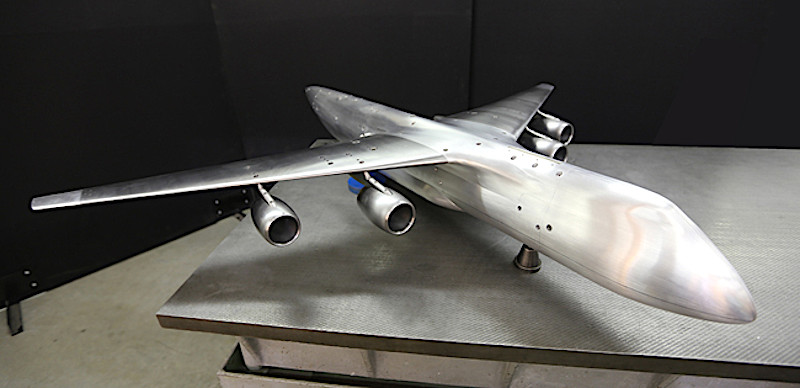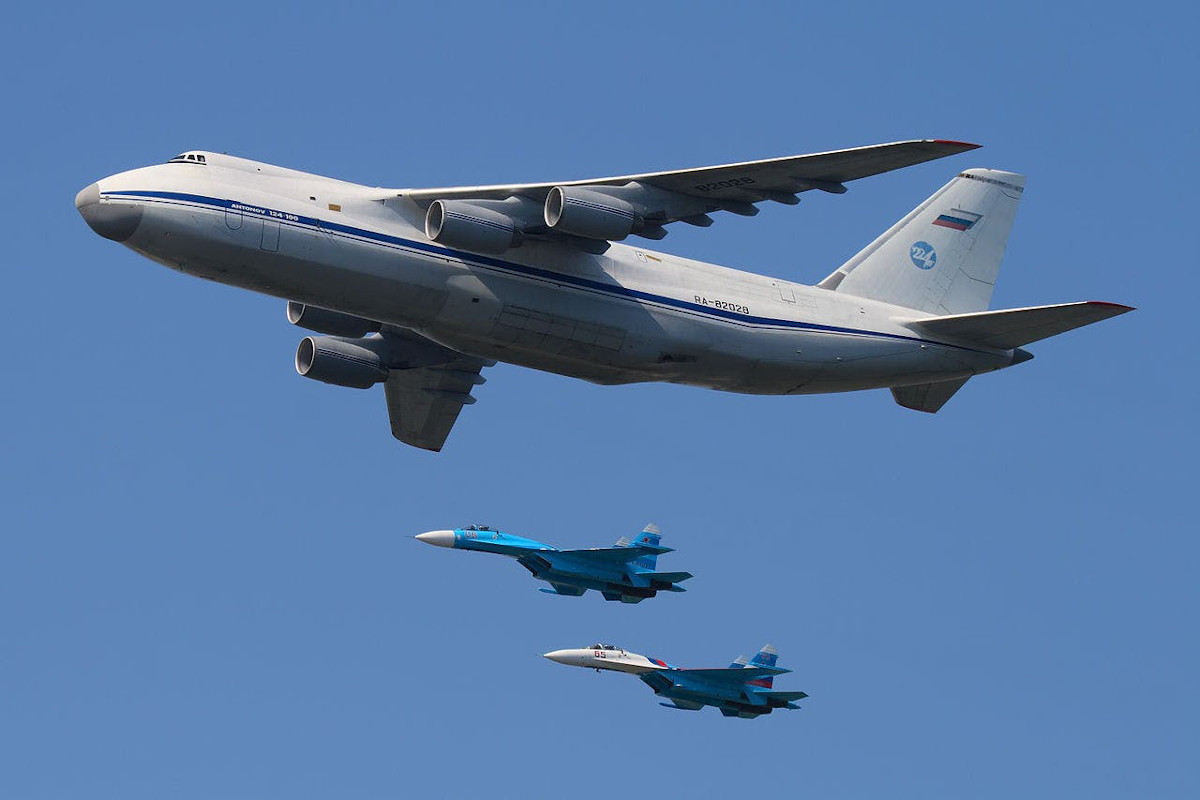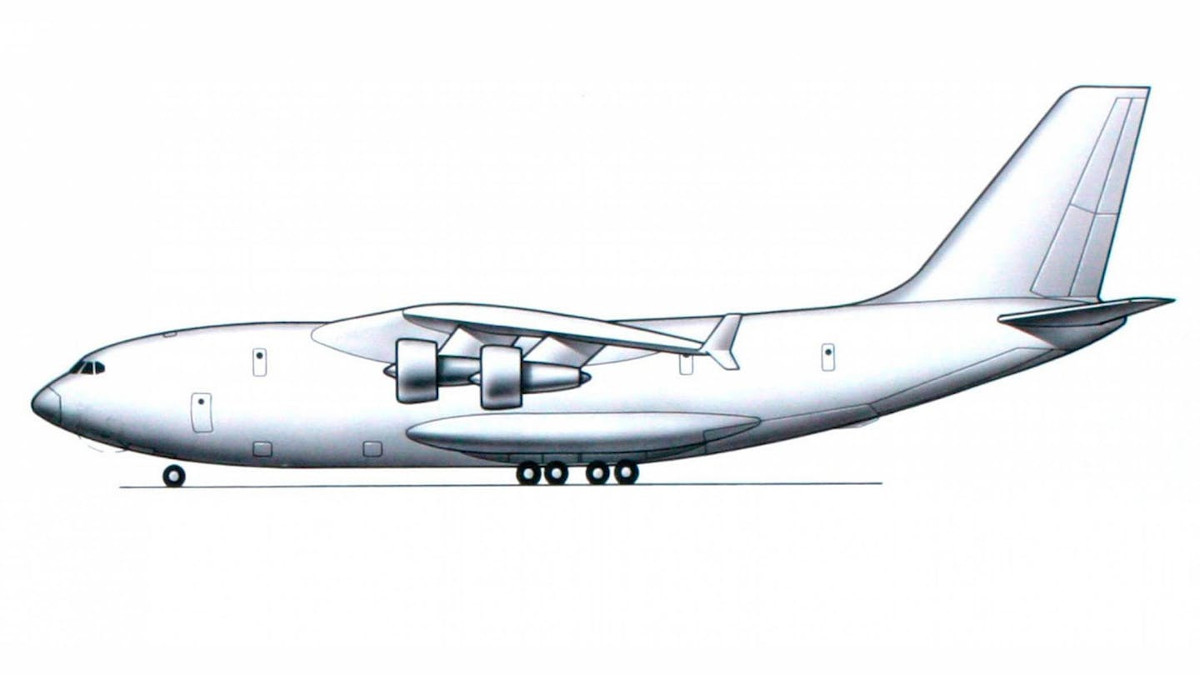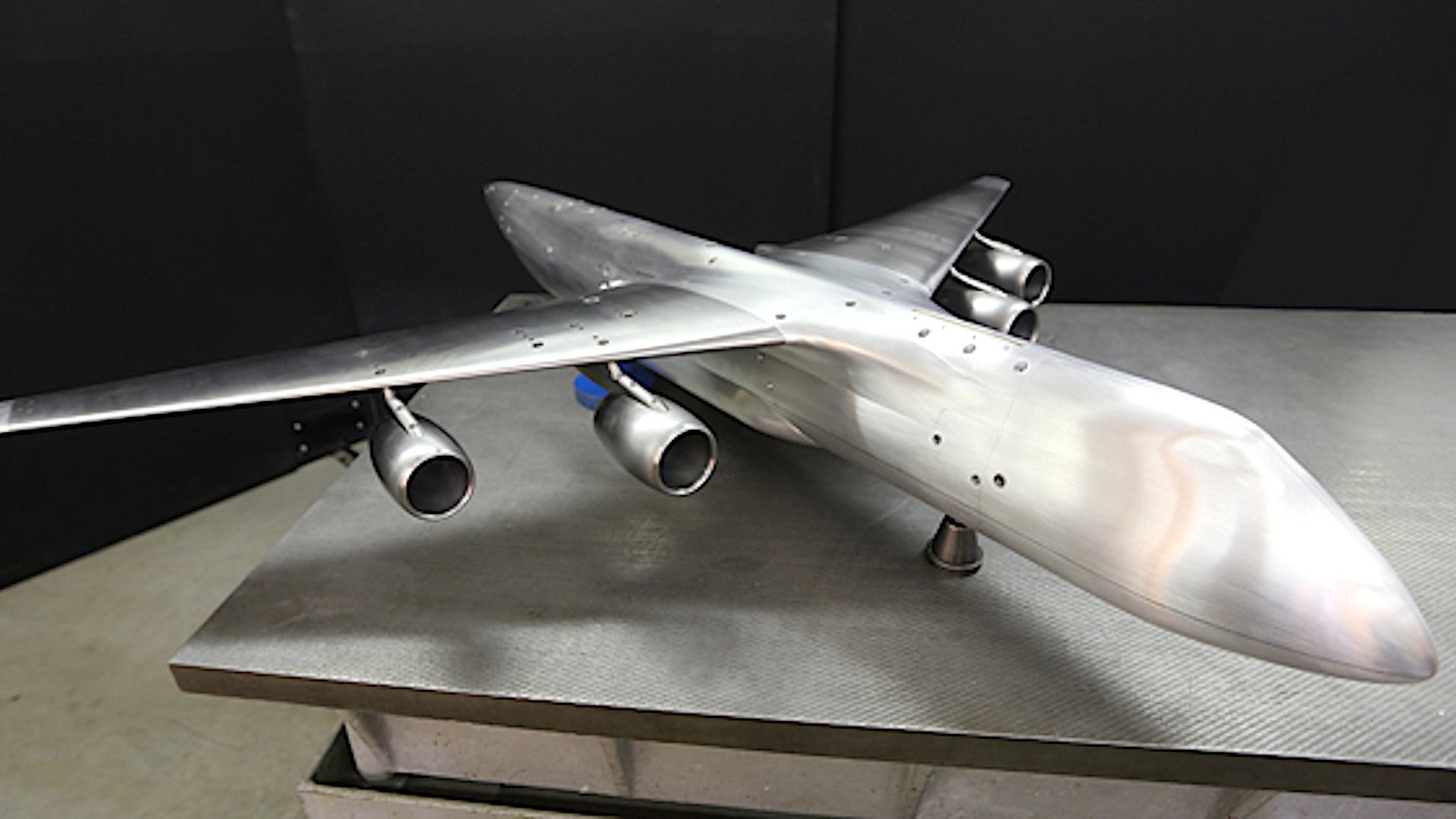Russia has revealed a wind tunnel model for a prospective cargo aircraft, dubbed the “Elephant,” to replace the Soviet-era An-124 Ruslan, or Condor. The Antonov company, which is situated in what is now in Ukraine, with which Russia has particularly poor relations at present, originally built the An-124s. Curiously, the Elephant’s design appears to be significantly different from previous models and artwork of the Ilyushin Il-106, which that company had said earlier this year was already in development to replace the Ruslans.
Russia’s Central Aerohydrodynamic Institute, also referred to by its Russian acronym TsAGI, posted a picture of the Elephant wind tunnel model on Nov. 5, 2019. Personnel at the center built the model, which they expect to begin testing the T-106 variable-density wind tunnel soon. Experiments, including exploring potential takeoff and landing performance, is set to continue in the T-106, as well as another wind tunnel known as the T-102, in 2020.
TsAGI says that the model is readily reconfigurable, which will allow them to explore various different nose, wingtip, rear fuselage, engine nacelle, and landing gear fairing configurations. It also presently lacks a tail of any kind, though the center said it was looking primarily at a single vertical tail with a two-section rudder, as is found on the An-124.
Depending on how it is configured, the model can be, at maximum, just over five feet in length, a little more than a foot and a half high, and have a wingspan that is close to six feet. The aluminum and steel subscale test article can weight up to 264 and a half pounds.

However, TsAGI did not give any sense of how large the full-size design this is supposed to be representative of might be in the end. For comparison, the An-124 is nearly 225 feet long, just over 62 feet high, and has a wingspan of 240 and a half feet.
The center did offer a few details about the prospective capabilities of the Elephant, saying that Russia was aiming for a design that could carry a maximum payload of 180 tons, 60 tons more than the An-124. The plane would be able to fly up to nearly 4,350 miles at a cruising speed of just under 460 knots. The Ruslan has a typical cruising speed between 430 and 460 knots and a range of around 4,500 miles with a payload of just under 90 tons.

TsAGI also says that four PD-35 turbofans would hopefully power the aircraft. This engine is a proposed derivative of the still-in-development Aviadvigatel PD-14, which is itself derived from the PS-90, a modern high-bypass design found on Russia’s Il-96 and Tu-204/214 airliner families. Those same aircraft have served as the basis for a number of special mission aircraft, including the Il-96-300PU presidential jet, the Tu-214R spy plane, and the Tu-214ON Open Skies surveillance aircraft.
As it stands now, the model, as well as TsAGI’s projected specifications for the Elephant, is very reminiscent of the An-124 planform, overall. AviationWeek‘s Defense Editor and good friend of The War Zone Steve Trimble also pointed out that it had very broad external similarities to the American Lockheed C-5 Galaxy heavy cargo aircraft, calling it a “Fred-ski.” This is a reference to the C-5’s less-than-polite unofficial nickname “Fred,” which stands for “F*cking Ridiculous Economic/Environmental Disaster.”
It is also a visually distinct design from earlier concept models and artwork of the Il-106, which reports have identified in the past as Russia’s An-124 replacement. Development of that aircraft traces back to the 1990s, but reportedly suffered significant setbacks and delays.

In 2016, FlightGlobal reported that Ilyushin had recycled the Il-106 designation for a new design, which it was developing as part of what was known at the time as the “prospective aviation complex for military transport aircraft,” abbreviated PAK VTA in Russian. However, in December 2018, the company’s chief designer, Nikolai Talikov, said that the “cargo cabin of the Il-106 will be the same dimension as the Ruslan,” but that it would have “new engines, new avionics, and everything else.” The wind tunnel model would seem to confirm the 2016 report that the present Il-106 has little to no relation to the earlier 1990s aircraft.
The exact size of the proposed design remains unclear. Last year, Talikov had described an aircraft that was smaller than the An-124, but still slightly bigger than something like the American Boeing C-17 Globemaster III, a possibility that The War Zone
had analyzed in-depth at the time. TsAGI’s descriptions about the Elephant’s projected performance would also seem to suggest that Russia is actually very much looking for a direct An-124 replacement. There’s no indication that there are multiple An-124 replacement efforts in progress, either, though the wind reconfigurable nature of the wind tunnel model would also suggest that the Elephant’s design is far from stable.
Whatever the case, the Kremlin has a clear incentive to develop a Russian replacement for the An-124 of some kind, which would eliminate any remaining need to approach Antonov for help with the Ruslans. Relations between Russia and Ukraine have been effectively frozen since 2014, when Russian forces illegally seized Ukraine’s Crimea region and began directly supporting separatists in the eastern Donbass region of the country.
Since then, Russia’s An-124 fleets – the Russian Air Force and other arms of the Russian government operate around 24 Ruslans, while the private Volga-Dnepr cargo airline has another 12 – have remained busy in recent years. These aircraft are regularly employed to transport heavy weapons and other equipment in support Russia’s overseas military operations, especially in Syria. The planes were a major component of an air bridge to that country when the Kremlin first kicked off its major intervention there in 2015. They’re continued to be important for resupplying that mission, including bringing in long-range surface-to-air missile systems, such as the S-300 and S-400, in recent years.

Russia has also used the Ruslans to support non-combat deployments, such as Tu-160 Blackjack heavy bomber visits to Venezuela and South Africa in 2018 and 2019 respectively. The Kremlin employs the government-owned aircraft to deliver weapons from state-run defense companies to allies and partners, as well. An-124s have been helping with the controversial delivery of S-400 systems to Turkey this year, as seen in the video below.

Persevering the capability that the An-124s offer will be key to ensuring the Russian military, as well as the Russian government, can continue with these sorts of overseas activities in the future, which are increasingly important to the country’s foreign policy ambitions. Russia is also looking to expand its military presence both in more remote areas within its borders, particularly its strategic Arctic regions, and elsewhere, where heavy airlift capabilities will be vital.
Thou Russia’s economy is undeniably better than it was in the 1990s, questions still remain about whether the Kremlin has the resources necessary to support the development of the new Il-106. International sanctions over the conflict in Ukraine, as well as the Kremlin’s involvement in Syria, have had real impacts and Russian defense spending has contracted to a degree.
At the same time, the Kremlin has made it clear that it is still very willing to continue to invest the resources it does have in projects that it sees as particularly important to its overall strategic aims. This has included a new order for 76 Su-57 Felon advanced combat jets, progress on the development of the S-70 Okhotnik-B unmanned combat air vehicle, and a slew of nuclear-armed strategic weapons, including hypersonic boost-glide vehicles, new intercontinental ballistic missiles, and nuclear-powered doomsday cruise missiles and long-range torpedoes.

Though relatively low-density, the existing An-124 fleet has clearly proven its worth and would seem to support the idea that developing a replacement is a worthwhile expenditure of limited time and funds. The wind tunnel model at TsAGI indicates that Russia is definitely moving ahead with at least one program to develop a successor design.
Last year, Talikov said that the Kremlin was hoping to see the rollout of the first Il-106 sometime between 2025 and 2026. How close the final Elephant design might be to An-124, or the Il-106 proposals, and whether Russia will be able to keep to this schedule, remains to be seen.
Contact the author: joe@thedrive.com

